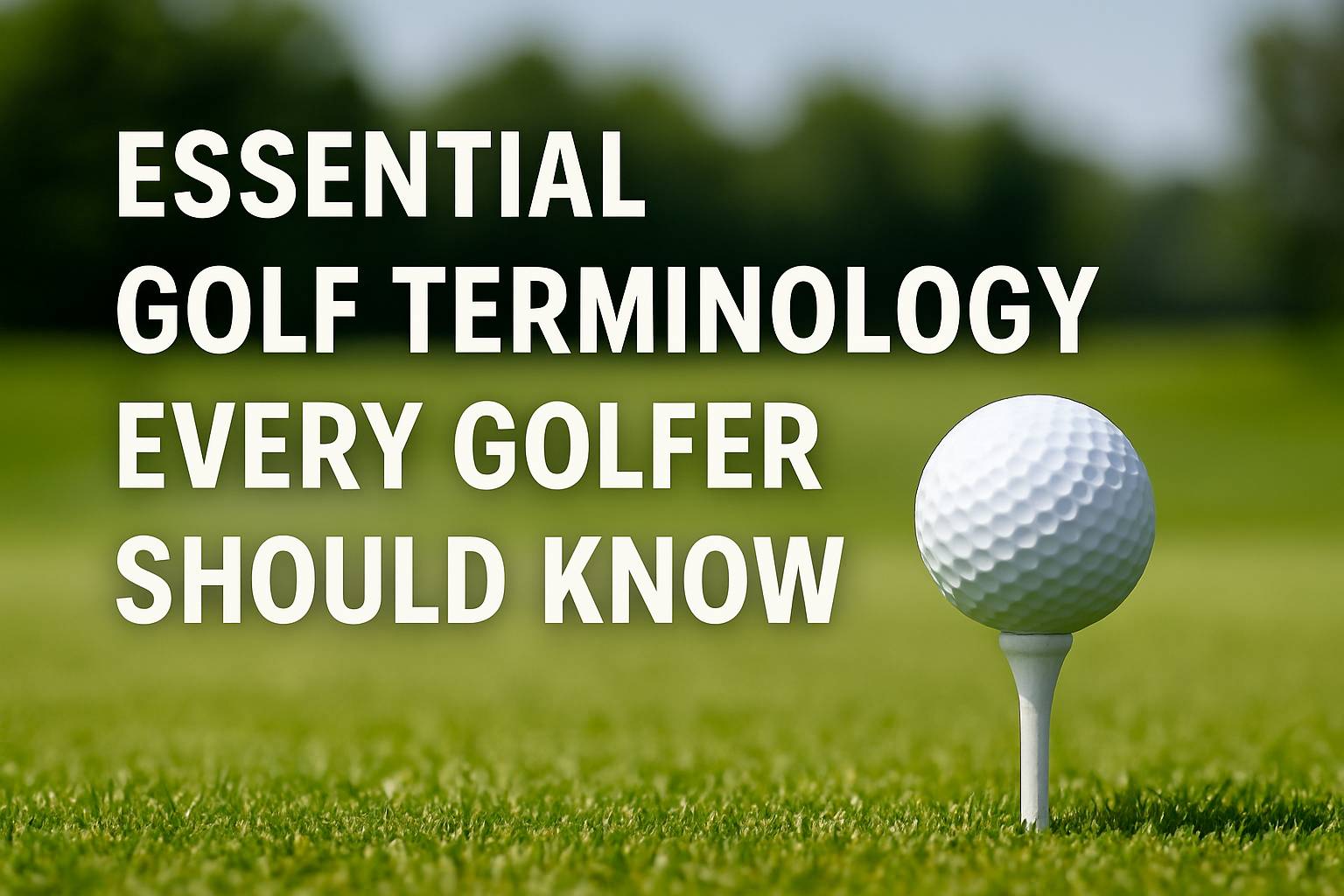Golf is often seen as a challenging sport that requires a high level of skill. This perception is not entirely wrong, as golf indeed demands precision in ball-striking techniques to achieve optimal results. It’s not just about how you swing the club, but also about preparing your stance, grip, and coordinating your body movements harmoniously for a powerful and controlled shot.
For beginners, learning the correct way to hit a golf ball is the foundational step before exploring advanced aspects of the game. Therefore, this guide from GoGolf provides a comprehensive explanation of the key stages you need to master—from establishing a solid stance and gripping the club correctly, to executing an efficient swing. By understanding this guide, you’ll build confidence on the course and gradually improve your overall performance.
Preparing a Solid Stance Before Hitting the Golf Ball

The first essential step is setting up a proper stance. This foundational posture is critical to ensure balance throughout your swing. If your base isn’t right, generating power and control becomes difficult—and it increases the risk of injury.
Start with your feet shoulder-width apart or slightly wider. This position provides stability, especially when rotating during your backswing and downswing. Place the ball slightly forward of center between your feet, positioning it closer to your front foot than your back foot.
Avoid standing too close or too far from the ball. Being too close restricts your swing and might result in hitting your body; being too far affects your balance and control. Maintain a natural distance where your arms can hang freely to grip the club comfortably.
Slightly bend your knees so your hips drop naturally. Tilt your upper body forward from the hips—not the waist—keeping your spine straight without hunching or leaning back. Your arms should hang down in a relaxed manner without tension. This basic posture provides the structural foundation for your entire swing motion.
Mastering this correct stance allows you to generate power efficiently into your golf shots. That’s why many golf coaches prioritize posture training before moving on to advanced techniques.
Make golf booking effortless. Install GoGolf App now!
Holding the Grip Correctly: The Key to Shot Control and Power

Once you’ve set your stance, the next step is understanding how to hold the grip properly. In golf, your grip directly affects your shot outcome—impacting both accuracy and distance. Gripping too tightly stiffens your wrists, reducing swing flexibility, while gripping too loosely weakens club control.
There are three main grip styles commonly taught to golfers, both amateur and professional: the Overlapping Grip, Interlocking Grip, and Baseball Grip.
Overlapping Grip
Also known as the Vardon grip, this is the most popular grip style in golf. Here, the little finger of your trailing hand (right hand for right-handed golfers) rests on the groove between the index and middle fingers of your lead hand. This grip is ideal for players with larger hands, providing a solid and stable feel through the swing. It helps unify both hands into one fluid motion, offering better shot control.
Interlocking Grip
In the interlocking grip, the little finger of your trailing hand hooks or locks with the index finger of your lead hand. This grip is often preferred by players with smaller hands or those seeking a tighter hold. Legendary golfers like Tiger Woods and Jack Nicklaus use this grip for its secure feel and maximum stability during high-speed swings.
Baseball Grip
Also called the ten-finger grip, this style resembles how you would hold a baseball bat. Both hands stay together on the club without interlocking fingers. It’s often recommended for beginners or those with weaker hand strength since it’s easy to learn. While this grip can generate powerful strikes, it requires more practice to maintain control.
Regardless of which grip style you choose, the key principle is to apply just the right pressure: firm enough to keep the club stable, but relaxed enough to maintain wrist flexibility. Think of gripping the club like holding a small bird—secure, but not forceful. With the right grip pressure, your wrists can move naturally with the rhythm of the swing for better contact and performance.
Mastering the Swing Technique: Coordinated Backswing and Downswing
After establishing a solid posture and proper grip, it’s time to tackle the core of hitting a golf ball—the swing itself. The swing is divided into two main phases: the backswing and the downswing. These phases are interdependent and must flow in harmony to produce an optimal shot.
Backswing: Building Stored Energy

The backswing involves lifting the club back and up over your head in preparation for the strike. During this motion, your shoulders rotate about 90 degrees relative to the target line, while your hips rotate around 45 degrees, creating a “coil” of energy. This stored energy is then released during the downswing.
Keep your lead arm (left for right-handed players) relatively straight while the trail arm bends naturally. Your eyes should stay fixed on the ball without lifting your head prematurely. A proper backswing generates potential energy that’s ready to be unleashed.
Downswing: Releasing Energy with Perfect Timing

The downswing starts by rotating the hips toward the target—not with your hands. Let your hands follow the body’s rotation naturally, transferring the stored energy from the backswing into the ball.
As the club nears the ball, your wrists release the “lag” angle formed during the backswing. This is when clubhead speed peaks, allowing for maximum ball speed and distance. After impact, continue with a full follow-through where your body turns fully toward the target in a balanced finish.
A common mistake among beginners is relying too much on the hands, disrupting the synchronization between the body and club. This results in inconsistent strikes. Remember, a good golf swing is a synchronized effort of the legs, hips, shoulders, arms, and club working as one unit.
Why Proper Technique Is Crucial in Golf
Many assume golf is about hitting the ball as hard as possible. In reality, the game demands more precision, control, and consistency. Without the correct fundamentals in stance, grip, and swing, your shots will be difficult to direct, and you’ll fatigue quickly due to poor muscle usage—risking wrist or lower back injuries.
Golf is also a mental game. A sound technique gives you the confidence to stand behind the ball and make strategic decisions—such as choosing the right club, reading wind direction, or judging green speed.
Effective Practice Tips to Improve Your Golf Swing
1. Train Setup Fundamentals
- Stance shoulder-width apart (wider for driver, narrower for wedges).
- Grip should be relaxed yet firm—too tight makes the swing rigid.
- Align shoulders, hips, and feet parallel to the target.
2. Focus on Clean Contact (Impact)
- Prioritize hitting the ball cleanly before the ground—especially for irons.
- Practice thin divot shots: ball first, then turf.
3. Use a Balanced Full Swing
- Complete your backswing to shoulder height and follow through to face the target.
- Maintain a smooth tempo throughout the swing—avoid rushing.
4. Short Game & Putting Focus
- 70% of golf scoring happens within 100 meters—practice pitch, chip, and putting often.
- Repeat short targets like chipping into a 2-meter circle until consistent.
5. Structured Practice Plans
Driving range routine:
- 40% short game (wedges & putting)
- 30% irons
- 20% drivers & woods
- 10% recovery shots (punches, knockdowns)
Use alignment sticks or mat lines to train your direction.
Common Golf Swing Mistakes
| Mistake | Cause & Impact |
|---|---|
| Overswing | Trying to hit too hard—loses timing, causes slice/hook |
| Grip Too Tight | Stiff arms/wrists, hard to square the clubface |
| Poor Balance (Swaying) | Hips/shoulders move sideways, lose power |
| Head Up Too Soon | Top shots—ball skims low off the ground |
| Incorrect Ball Position | Too far forward/backward causes hooks/slices |
| No Follow-Through | Stops mid-swing—loses distance and accuracy |
Summary: Key Tips for Successful Practice
✔ Train tempo and balance, not just power
✔ Always check ball position and alignment before each shot
✔ Use specific drills: e.g., 20 balls at 50 meters, 20 with fairway wood, 30 putts
✔ Keep your head stable and eyes on the ball through impact
✔ Record your swing on video and evaluate your backswing, impact, and follow-through
Conclusion: Make Practice a Routine to Master Golf
Ultimately, understanding the theory behind hitting a golf ball is only the beginning. Mastery comes from consistent practice—at the driving range and on the course. Consulting a professional coach can help you correct minor mistakes before they become habits.
As you train regularly with a solid stance, proper grip, and synchronized swing, your shot quality will improve significantly. Your game scores will improve, and you’ll begin to enjoy golf not just as a sport but as a form of art—challenging and rewarding.
We hope this comprehensive guide serves as your foundation for a fulfilling golf journey. Keep practicing and enjoy the process, because golf is not just about winning quickly—it’s about being patient and smart with every shot.
[ Follow our social media Account: GoGolf Instagram | GoGolf Facebook | GoGolf X ]











